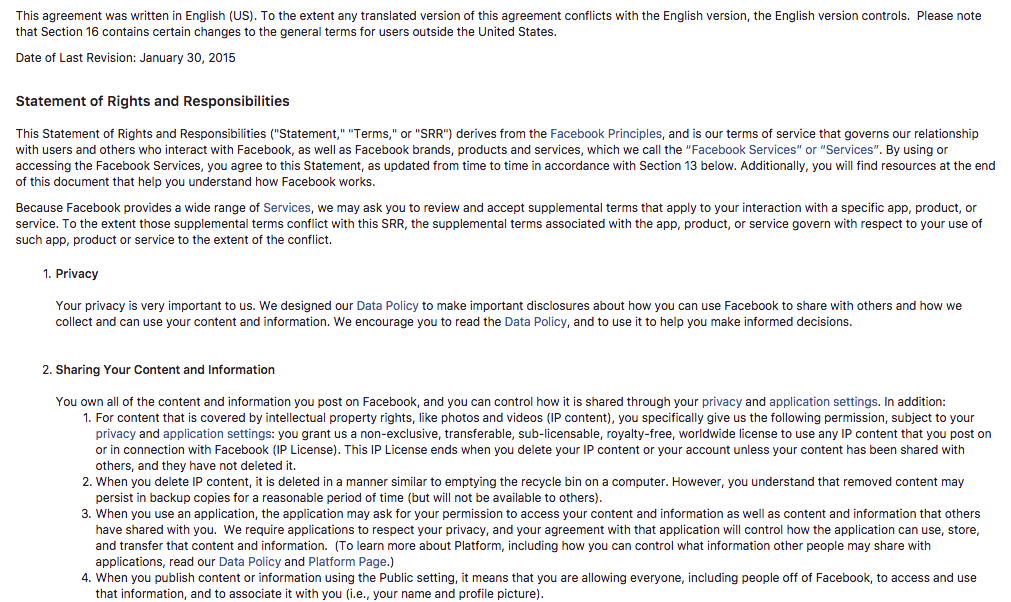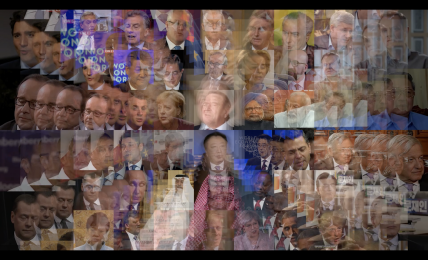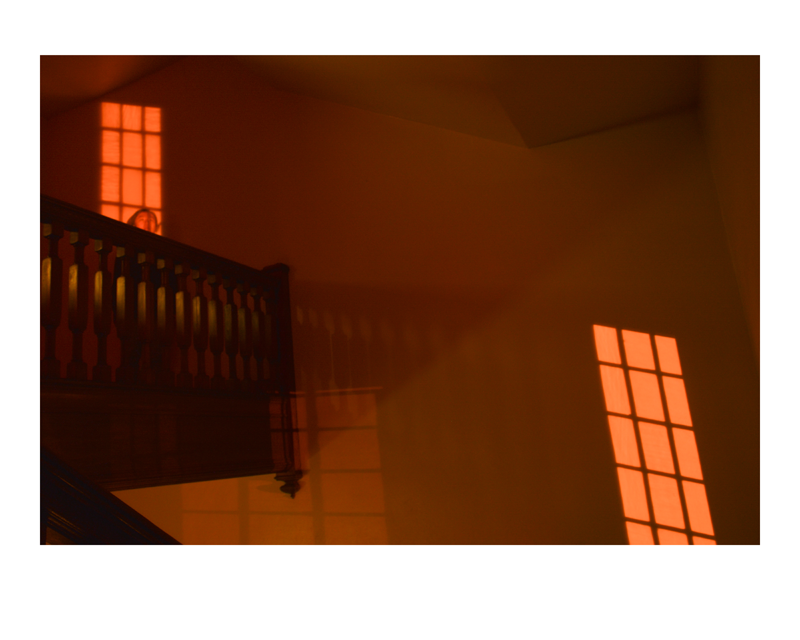Archives are repositories of the past orientated towards the future and creation of cultural memory. Up until recently, most digital archives for new media art were products of established museums and archives attempting to grasp what was, at this point, an uncharted art form. These institutions brought with them centuries of experience in archiving and conservation of traditional media. But museums and archives had only a limited understanding of new media art’s cultural codes. In order to create archives of digital art that can accommodate the novel framework and culture surrounding new media art, it is necessary to rethink core structures of the common institutional archive.
As new technologies become old, many new media artworks will fall into oblivion. The space left by these forgotten works leaves a hole in our cultural memory. How do we ensure that future digital art archives are fit to preserve new media art? What happens if the work of the singular archivist is opened up and shared with the public?
A Remark on the Potential of the Archive
The archive is a space of ongoing negotiation between historical origins, truths, users and institutions. These negotiations present an image of the constitutive structures that emerge from the act of selection for the archive. The archivist preserves objects of the past only to be retrieved later in the creation of cultural memory. In Archive Fever: A Freudian Impression, Jacques Derrida describes the archive’s relation to the future; “The archive has always been a pledge, and like every pledge [gage], a token of the future.” (Derrida 1996, 18) In this sense, the archive is always orientated towards the future to create a past for tomorrow—to create “the new.”
Archives also have a political power. This power originates in what the archivist—as a sort of original curator—selects or rejects for the collection. Ultimately, this selection gives the archive its concept and goal.
New media art can open up century-old traditions by dragging the archives out of exclusive institutions into the public sphere of the internet. In Declaration, Michael Hardt and Antonio Negri explain how government and industry control over information and communication networks has created a new group of subversive users—“the mediatised.” Through constant confrontation with control mechanisms created by the internet’s commercialisation, users have taught themselves techniques to avoid these restrictive measures. Users can create a space of their own on the internet; “[…] becoming singular, in contrast to becoming individual, means finding once again the subjective force in being together.” (Hardt and Negri 2012, 24) An online archive based on collaboration instead of corporate interests is one proposal as to what shape these spaces might take.
The Creation of ‘The New’
Philosopher and media theorist Boris Groys investigates the archive through the art market’s constant search for cultural innovation in On the New. Historically, a consensus or ruling class has determined the canon and archives for the general population. Groys takes his outset in the “Bildungsbürgertum”—an 18th century German social class defined as an educated bourgeoisie—who used to be the authorities on taste, art and culture. Instead of ruling by imposing financial or religious statutes, the Bildungsbürgertum ruled through a judgment of what was to be seen as “correct” and “venerable” knowledge.
With the disappearance of the Bildungsbürgertum and other ruling classes of taste and canon, Groys argues, “[…] one can say that in this sense cultural memory has also disappeared. This means that nobody remembers anything. And society as a whole doesn’t remember anything any more either.” (Groys in: Abdullah and Benzer 2011, 74) This loss of history is in part due to globalisation and the loss of a cultural elite, which in turn has brought on a chock about what to remember. This chock has been replaced by acceptance and even joy. Instead, the focus is now on the creation of “the new” in an age saturated by reproductions.
Groys draws on Marcel Duchamp’s use of the readymade in the beginning of the 20th century. This was a historical turn for the definition of art. Suddenly, there was a division between the archive and what Groys calls “profane space.” (Groys 2014, 86) According to Groys, every cultural innovation after Duhamp’s Fountain follows the same logic as when the urinal was first introduced as an art object into the exhibition space. Groys defines profane space as everything that is not yet included in the archive. Between the archive and the profane space exists the determining factor in whether or not an object holds any cultural value—whether it is new and worthy for the archive’s collection. This evaluation of art is what creates the cultural new. (Abdullah and Benzer 2011, 72)
Rhizome ArtBase
In 1996, Mark Tribe founded Rhizome as a mailing list to promote new media art and in August of that year the website opened to the public. Rhizome established the artist-driven, web-based archive of new media and digital art—ArtBase—as a way to promote and share new media artworks within a relevant context. The goal of the artist-run ArtBase is to be a public access point to a comprehensive collection of new media art where artists can present and discuss their work. Since 1999, ArtBase has been accessible through http://rhizome.org/artbase/ and holds more than 2500 artworks. These artworks take the shape of everything from websites, algorithms, games, images, animations and even installations with physical parts. In spite of being an artist-run, not-for-profit archive—independent of private institutions—ArtBase is still modeled on relatively conservative ideals about preservation and archiving. The artworks are treated as fixed, unique objects in a culture that celebrates openness, mutability and collaboration.
ArtBase has a radical possibility to change current preservation and archival methods. Transforming ArtBase into an open-source, collective network of versatile users enables a new type of archive. Such an archive should be fit for the wide variety of preservation challenges in an ever-changing technological landscape—An archive outside of the museum’s control over our cultural memory and the art market’s economy.
Connectivity, collaboration, sharing and representation are central to new media art and digital culture. In order to preserve these unique but ephemeral qualities of new media art it is crucial that these artworks are archived for the future. That being said, archives do not have to be secluded basements where art is left to collect dust in cultural amnesia.
Towards an Open Archive
Unlike paintings or sculptures it is not important that new media art is frozen and preserved in a 1:1 relationship. The technologies to access new media art change and evolve—operating systems update and hardware becomes obsolete. The artworks should reflect this development. Therefore, a new methodology of archiving and conservation must be established—a methodology that works outside of art-historic and media-specific traditions.
Looking at the challenges facing new media art archives, it is evident that archiving is not the job of a single expert archivist or conservator. The wide variety of technical competencies vital to archiving new media art must be found in a network of experts, ready to tackle the manifold archival difficulties. The archival and artist communities do not lack talented individuals, but so far traditional approaches to archiving have lacked the scope and innovation required.
A more open archive based on ArtBase would be built on the principle of a networked intelligence. Interconnected users would manage a distributed and efficient workload. The Open Archive should have an architecture built by a few qualified individuals (not unlike ArtBase). Vast networks of users who archive and conserve the objects in the collection would subsequently shape the archive. Artists, hackers, bloggers and a plethora of other users would occupy roles of curators and archivists. Archiving would no longer be an isolated activity in the exclusive milieus of the art institution. This new structure would allow technologically savvy individuals to fix broken code in artworks or dead links—an impossible task for a single archivist. Connected users carry a potential for preservation and archiving, which would be based in enthusiasm for and interest in a wide variety of subjects.
The Open Archive would engage its users in an active community. Just as it happens in Wikipedia (for general knowledge), Github (for coding and programs), and The Internet Archive (for recordings, documents and websites), where volunteer users distribute the work of documentation, conservation and contributions amongst each other. As it happens on these projects, it should be possible to create a more active community than the current state of Rhizome’s ArtBase, whose users consist mainly of paying members and curious passers-by.
Our Unconscious Archive
If we look at archiving in the same way that we observe our actions on social media, we can engage users who are normally disinterested in archival efforts. When users update their Facebook, Twitter, Instagram, or their blogs, what they are really doing is archiving. Users constantly consign information about themselves in an effort to create a public identity. Although more of our digitally stored data is being hosted in the cloud via all manner of mobile devices, there is still a move towards linking our virtual social life to the physical world we inhabit. Whether it is “checking in” at an art gallery (via GPS), affixing a date to a blog post, or sharing an image from a concert, these are all ways of crossing the divide between the physical and the digital.
What users actually do is archive their lives through images, text, video, and audio. If these almost-unconscious actions of digital archiving can be harnessed, archival efforts like these can be used to map our new media art history. In a sense, the preservation of art history is already happening every time a Tumblr user reblogs a digital artwork. By re-hosting the image on his or her blog, the user creates a copy, thereby reducing the chance that the artwork is forgotten.
Critic and curator Domenico Quaranta describes this joy of unconscious digital archiving in the catalogue to his exhibition, Collecting the WWWorld; “When, at a later date, I would rummage through that jumble of folders and subfolders, I unfailingly felt like the owner of a medium-sized museum. [M]uch of this material has disappeared from the Web without a trace […]—all of it assembled without the slightest pretence of collecting.” (Quaranta 2011, 8)
The Open Archive must be able to grasp this disparate archival impulse. By imitating people’s everyday networks a novel crowd of archival enthusiasts can be mobilised.
Ownership vs. Accessibility
One major challenge for new media art archives is the concept of ownership in the digital sphere. With the thought of the internet as a free and open space, digital culture rejects traditional notions of ownership. Instead it relies on an affinity towards free distribution and sharing. As Rhizome’s former digital conservator Richard Rinehart explains, it is “[…] the unique property of new media that allows one to share the original [artwork] without diminishing it.” (Ippolito and Rinehart 2014, 107) The art market is so geared towards economic gains that although artists have been moving away from object-based art forms since the 1960s, many still expect to sell artworks as if they were unique and un-shareable objects. In a culture in which sharing is one of the greatest defenses against forgetfulness and obsolescence, it is ideal that the Open Archive should be able to freely copy and share its artworks.
Preservation of new media art is dependent on use and access. In an interview for the Library of Congress’ “Insights Interviews” Jon Ippolito gracefully sums up this approach to preservation: “We need a more balanced approach. You want to fix a butterfly? Pin it to a wall. If you want to preserve a butterfly, support an ecosystem where it can live and evolve.” (Ippolito in: Owens 2014) Traditional archives will likely protest the Open Archive’s diminished focus on ownership. Will the volunteer users be able to handle the collection and create a comprehensive archive without institutional backing? Is it safe to leave such an important part of our art history in the hands of an anonymous group of users?
Once again, we can look to Wikipedia. As described earlier, amateurs who are specialists in a vast variety of fields built up this encyclopedia of (almost) everything. There are many attacks to Wikipedia from internet troublemakers, government officials with political agendas, and users with a religious or scientific bias. In one way or another, these users actively work against the goal of a free and neutral encyclopedia. However, due to the solid framework set in place by the founders of Wikipedia and the tireless efforts of its users, attacks like these are often corrected before any other user even notices. The sense of community built up around a noble task convinces users to keep building and improving their content.
Just as Wikipedia does not consist solely of university professors, an open archive would not consist solely of archivists. A vast skill-set is required to build the Open Archive—ready to tackle the wide variety of issues related to digital preservation. A multitude of artists, engineers, programmers, curators, historians, conservators, students, journalists, and writers are all potential users of an open archive of new media art. By building a strong framework that encourages creativity, participation, and development, it is possible to create an active and living archive that challenges the art market’s authority.
Conclusion
The maintenance of archives is dependent on social interaction. Traditionally, museums and archives have relied on a single archivist’s ability to handle a collection. In order to create archives that can accommodate new media art it is necessary to rethink the structures of institutional archives. As Boris Groys points out, the new is always created in cooperation with the old. The archive is thus an active space for new creativity and a common art history. Furthermore, the archive is a space for cooperation, where artworks wither if they are not used and engaged with on a regular basis. It is therefore necessary to open the archive and its workings to the internet’s vast network of users.
The longer we wait, the more we lose of our new media art history. This is why an already functioning institution such as Rhizome’s ArtBase is a prime candidate for the Open Archive. ArtBase is already well underway with one of the largest online collections of new media art. By opening up the ArtBase and allowing users to continually update and re-work its structure, ArtBase could become the open archive new media art requires. All it needs is a push in the right direction.
Works Cited
1. Derrida, Jacques, Archive Fever: A Freudian Impression (Chicago: University of Chicago Press, 1996)
2. Hardt, Michael, and Antonio Negri, Declaration (New York City: Argo-Navis, 2012)
3. Groys, Boris, On the New (London: Verso, 2014)
4. Abdullah, Hannah, and Matthias Benzer, “‘. . . Our Fate as a Living Corpse . . .’: An Interview with Boris Groys,” Theory, Culture & Society, 28 (2011)
5. Quaranta, Domenico, “Collect the WWWorld: The Artist as Archivist in the Internet Age,” in Collect the WWWorld: The Artist as Archivist in the Internet Age (Brescia: LINK Editions, 2011)
6. Ippolito, Jon, and Richard Rinehart, Re-Collection: Art, New Media, and Social Memory (London: The MIT Press, 2014)
7. Owens, Trevor, “Collecting and Preserving Digital Art: Interview with Richard Rinehart and Jon Ippolito,” The Library of Congress, 2014 (tilgået den 27. november 2014: http://blogs.loc.gov/digitalpreservation/2014/11/collecting-and-preserving-digital-art-interview-with-richard-rinehart-and-jon-ippolito/)
Context Links
An article on the growth of digital archiving
A piece about Rhizome’s new social media preservation tool
A Boston Globe article on the preservation of digital art
:::
Tobias Linnemann Ewé is an independent emerging researcher living in Copenhagen, Denmark. In December 2014, he finished his MA in Modern Culture and Philosophy with a thesis titled Ephemeral Archives: Towards a Lasting Impression – On the Subversive Politics of Archives, Memory and New Media Art. In 2012, Tobias founded the curatorial collective Macho Llorando and has curated four exhibitions. Tobias has been published in the Nordic music journal Seismograf and the interdisciplinary journal MosaIKK. He is currently applying for PhD positions within the fields of ontology of sound, archives of sound art and new media art, digital folklore, and digital art preservation in non-institutional settings.



